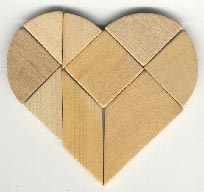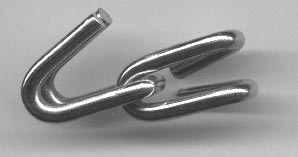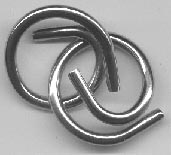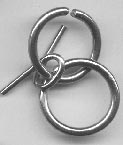THE IQ-BLOCK
or
a game for big and small children, you could get
addicted to
by
Hartmut Blessing
It’s
just some time ago, a friend of mine showed me a commercial present, a puzzle
made of plastic, cause she recognized, that I was often pondering and puzzling
and even the crossword-puzzles in the Bild-Zeitung made no fun for me after the
solution in few minutes. I made at once a sketch of this fascinating puzzle and
build a version of wooden wastes with jigsaw and glue. Surely, also other
materials are attractive, but at least it should be cardboard.
The
puzzle is named „IQ-Block“ and consists of 10 pieces, which one can combine in
different ways to a square with the measurements 8 LU x 8 LU (length units).
You can use the pieces on both sides. And this it how it looks like:
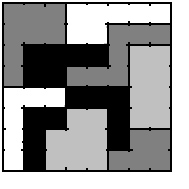
|
In
the enclosed instruction stood, that there are about 60 solutions. Meanwhile, I
found circa 140 different solutions and still find new ones. For the game has a
very high addiction potential (side-effects unknown)! Of course, rotations and
reflections of already existing solutions are invalid! Rotations or reflections
of single groups of parts (e. g. squares in the square, later more about this)
I find admissible. A friend, who studies mathematics, meant, there must be a
limited number of solutions, meanwhile, I know, that there are 12724 solutions.
For
a better view, I divided the solutions after the position of the 4x2-rectangle
in the whole square:
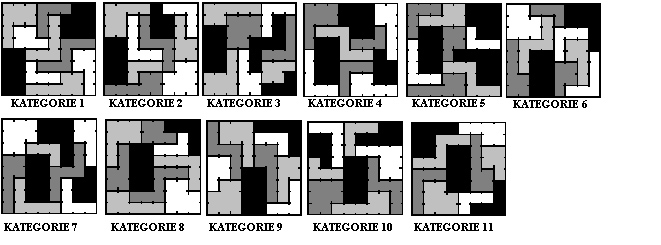
How
should one manage now the solution of the IQ-block? For beginners one should
say: from the difficult to the easy, from the big and bulky to the small and
comfortable (that could also be a motto for life). For example, like that:

Professionals
don’t take it that easy way, but search for special solutions, e. g. the
4x2-rectangle exactly in the middle, which corresponds to category 11. Or one
begins with the bulky, s-shaped piece, namely somewhere in the middle, like in
the examples for category 2 and 4. Or one tries to build two complete
rectangles, which halve the whole square exactly. Here some interesting
examples:

The
most difficult is it again and again, when you do it just the other way like
the beginner, which means at first the small, L-shaped piece (which is also
used in the game „Tetris“), then the
other small ones etc. By the way: reversing is allowed, yet even necessary and
educates the flexibility.
Even
for children, highly-talented or not, boy or girl, the IQ-block is suited for
the promotion of intelligence, creativity and flexibility, especially if the
pieces are painted lovely multicoloured.
As
well, one shouldn’t stay only by the stiff square-frame, but also let the
children invent other figures, like it e. g. it is the case at the well-known
tangram, or when we watch spots on the wall or clouds and recognize forms in
them. This intuitive form of intelligence often is neglected - even by
children. To strengthen the most important (hardly measurable) form of
intelligence, the social intelligence, children can make this puzzle also in
groups.
Here a phantasy form, a dancing man:
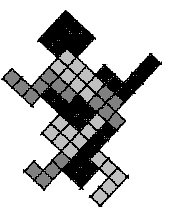 |

